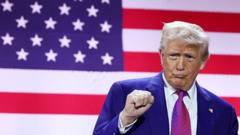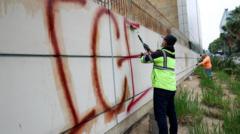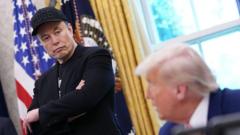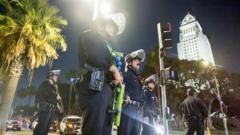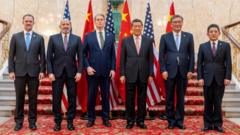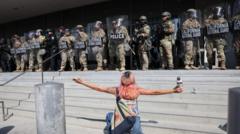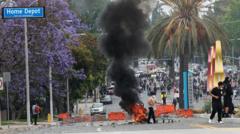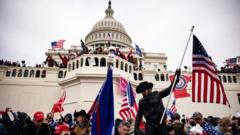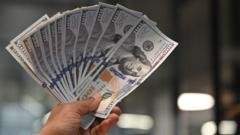As Qatar crafts a significant gift for the president, we explore Air Force One's unique interior and the implications of a radical change.
**Air Force One: A New Beginning with Qatar's Lavish Offer**
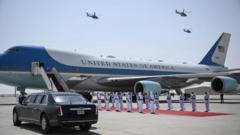
**Air Force One: A New Beginning with Qatar's Lavish Offer**
Inside the iconic presidential jet and the challenges of a potential transformation.
Onboard Air Force One, most journalists accompanying the U.S. president are limited to the press cabin at the rear of the aircraft, while access to the presidential suite at the front involves negotiation with armed Secret Service personnel. During Donald Trump's recent Middle East visit, the future of the plane became a focal point, especially with Fox News host Sean Hannity granted direct access to the president for an in-flight interview, leaving the rest of us in the cramped press section.
Despite its limitations, Air Force One isn't a tough plane to fly in; the press cabin features 14 comfortable seats akin to first-class domestic flights, a bathroom, and a table stocked with snacks. Exclusive to the aircraft are Air Force One-branded M&Ms that bear the president's name, alongside two monitors typically tuned to his favorite news channel. For longer flights, an onboard kitchen provides plated meals, although shorter flights may result in takeaway food.
However, the future interior of Air Force One may shift dramatically if Trump accepts Qatar's offer of a new "palace in the sky," a gift valued at a staggering $400 million. Notably, "Air Force One" is a call sign designated for any Air Force aircraft carrying the U.S. president, and various planes have held this title throughout history, notably the 747-200b that many visualize—renowned for its blue and white color scheme first determined by Jackie Kennedy in 1962.
Currently, the Air Force operates two aging 747s from 1990, and their maintenance costs have increased significantly. Trump has made it evident that the advanced age of the aircraft—often exaggerated to being 42 years old—frustrates him, particularly when he recalls the sleek new models he envisioned in office and the modifications he proposed.
Trump's growing interest in Qatar's offer stems from dissatisfaction with delays surrounding new presidential jets initially slated for delivery in 2021 but now unlikely to be ready before 2029. The former president has even sought assistance from tech mogul Elon Musk to expedite the timeline, with discussions surrounding the suitability of accepting a foreign gift of a 747 raising legal and ethical eyebrows.
Transforming Qatar's aircraft for American presidential use carries significant technical hurdles, including retrofitting for communications, security, and in-flight refueling capabilities. This overhaul would be extensive, possibly costing up to $1 billion and requiring years of work, leading experts to predict it may not be feasible until 2030.
The eventual retirement of these 747s will mark the end of an era that has included notable moments: flying former presidents to pivotal events or managing national emergencies, highlighting the jet's role as more than just a luxury aircraft but as a vital element of presidential authority and command.
Ultimately, as Trump embarks on his new chapter amid these high-flying discussions, Air Force One remains a symbol of American power, bridging historic significance and contemporary challenges. The weight of each journey undertaken by this flying command center underscores its unmatched importance as a vehicle of governance and symbol of the nation's leadership.


